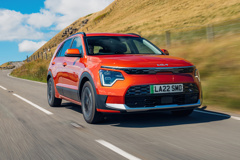Hyundai Kona Electric Review 2025
Hyundai Kona Electric At A Glance
Significant waves were made by the first-generation Hyundai Kona, which played a big part in the brand leaving behind its budget roots. It also took the initiative by offering petrol, hybrid and fully electric versions of the same car. Now there’s a new model — we’ve already driven the petrol and hybrid Hyundai Kona already, but how does the electric car version stack up? Find out in our full Hyundai Kona Electric review.
Competition has significantly increased since the original Hyundai Kona Electric arrived, with the second iteration vying for attention with the likes of the Fiat 600e, the impressive Peugeot e-2008 and the Vauxhall Mokka Electric, as well as the closely related Kia Niro Electric, to highlight just a few.
There’s little to distinguish between the various power systems from the outside - each version of the new Kona benefits from an increase in dimensions and more grown-up styling to go with it. Hyundai’s more expensive EVs have won over buyers with their radical looks and although the new Kona is a bit more on the conservative side, it looks thoroughly modern and a step forward from the outgoing version.
As with the previous generation, there is a choice of power systems for the Hyundai Kona Electric. The entry-level Advance trim can be had with a 48kWh battery pack and an electric motor with 156PS and 255Nm of torque, or a 65kWh battery and a more powerful 218PS motor with the same torque output. All trims above Advance are fitted with the larger battery and more powerful motor as standard.
Performance is modest, with a top speed of 101mph or 108mph on the more powerful versions, with the 0-62mph acceleration benchmark taking 8.8 seconds and 7.8 seconds, respectively.
All versions can be charged at a 150kW public fast charger, with 74kW maximum charge on the smaller battery and 101kW on the larger version. Hyundai quotes a maximum potential range of 234 miles for 48kWh versions and 319 for 65kWh versions, which should give comfortably over 250 miles range in the real world.
Step inside the Hyundai Kona Electric and the increase in space is an obvious change and a welcome improvement. Occupants seated front or rear can now enjoy more head and legroom and there is additional boot space too. The interior itself is quite conservative in its design compared with the exterior, but it is easy to use and feels well constructed, while the standard specification is generous.
The driving experience ticks all the boxes most buyers will be looking for from a compact electric SUV, with plenty of torque and easy acceleration available from the electric motor, although inevitably performance tails off a little as you approach higher motorway speeds.
The Hyundai Kona Electric is also easy to drive thanks to its light steering, although with little feedback on offer it does keep the driver slightly disconnected from what is happening with the front wheels.
Hyundai has moved the Hyundai Kona Electric forward in many areas and as a result it is one of the most appealing mid-sized electric SUVs on the market. If you are in the market for a car of this type it is well worth serious consideration.
Hyundai Kona Electric: Range
| Hyundai Kona Electric 48kWh | 234 miles |
| Hyundai Kona Electric 65kWh | 282-319 miles |
Hyundai Kona Electric handling and engines
Hyundai Kona Electric 2025: Handling and ride quality
Hyundai has taken an understandable approach with the driving experience, with a suspension set-up and tuning that is best-suited to everyday driving in a variety of conditions and passenger loads.
The suspension itself is relatively soft, which means it is adept at filtering out lumps and bumps, particularly at lower speeds. That means a comfortable experience for both driver and passengers. At higher speeds this softness means there can be a little more body movement than is desirable, but it is nothing that backing off the accelerator slightly will not smooth out.
The Hyundai Kona Electric is also quite undemanding to pilot, with light steering that makes short work of parking and urban driving. The flip-side of this is that it can feel a little too light at higher speeds when more resistance would be welcome, but it responds accurately to inputs from the driver.
Should you choose to corner with a little more enthusiasm, the Hyundai Kona Electric is willing and has more than sufficient grip, but the softness of the suspension and modest feedback through the steering means it doesn’t encourage this kind of driving. However there is nothing in its behaviour that would cause the driver any issues.
Hyundai Kona Electric 2025: Engines
Two power systems are available for the Hyundai Kona Electric: a 48.4kWh battery mated to an electric motor with 156PS and 255Nm of torque, or a larger 65.4kWh battery with a 218PS motor that has the same torque output.
The former offers a top speed of 101mph and 0-62mph in 8.8 seconds, while the more powerful version has a top speed of 108mph and 0-62mph in 7.8 seconds.
Charging speeds for both versions are 1 hour and 22 minutes from 10%-80% on a 150kW public charge point. Note that this is a higher rate than either battery’s on-board charger can manage: the larger one can accept a charge at up to 101kW, compared with 74kW on the smaller option.
Both versions of the Hyundai Kona Electric offer the kind of seamless and low-effort performance expected from an EV, although inevitably the more powerful 218PS version is a little more capable despite the same torque output for both. While there is a little noise from the electric motor at lower speeds, it still offers the kind of smoothness and low noise levels that no petrol or diesel car can achieve.
The Hyundai Kona Electric is fitted with paddles behind the steering wheel which allow you to quickly and easily change the strength of the regenerative braking effect, to the point where you can drive it in one-pedal mode. As you can change this on the move means you can tailor its behaviour to your preferences or circumstances.
Hyundai quote an official range of 234 miles for the 48kWh version and 319 miles for the 65kWh version, which is very competitive compared with key rivals.
Hyundai Kona Electric 2025: Safety
Euro NCAP tested the Hyundai Kona Electric in 2023 and awarded it four start overall. It achieved an 80% rating for adult occupant protection and 83% for child occupant protection, but modest scores of 64% for vulnerable road users and 60% for safety assist contributed to the four-star overall rating.
As standard all versions are fitted with forward collision avoidance, highway drive assist and lane follow assist. N Line S and Ultimate models benefit from additional features such as rear cross traffic collision avoidance, safe exit warning and surround view monitoring.
Hyundai Kona Electric 2025: Towing
The Hyundai Kona Electric Advance 48kWh model has a maximum towing capacity of 300kg for both braked and unbraked trailers, while all 65kWh models offer an increased braked towing capacity of 750kg.
Hyundai Kona Electric interior
Hyundai Kona Electric 2025: Practicality
Appearances may have something to do with it, but many buyers look towards electric SUVs because of the space and practicality they offer. The Hyundai Kona Electric is one of the best in the class in this respect.
Front seat passengers enjoy generous head and legroom, usefully increased compared with the outgoing version, while elbow room is also good and generously-sized windows help to increase the feeling of space.
It is a similar story in the rear too, with enough head and legroom to accommodate passengers of six feet in height, even if they are sat behind someone similarly sized. Shoulder room is good and even the central seat occupant isn’t short-changed, with the flat floor being a welcome bonus.
There are plenty of useful storage areas dotted around the cabin, while the boot offers a generous 466 litres of space with the rear seats in place, rising to 1600 litres when they are folded over.
Hyundai Kona Electric 2025: Quality and finish
While models higher up the range offer a more premium cabin, in the Hyundai Kona Electric there is a less upmarket feel. Still, there is a decent amount of high quality finishes dotted around, with cheaper plastics being hidden where you will not encounter them too often.
More importantly, everything feels well screwed together and ready for the challenges of family duties. All the switches and controls operate with a reassuring solidity, which makes them a pleasure to operate.
Arguably the interior could do with a bit more garnish to it, as there is little in the way of colour among the grey plastics and fabrics.
Hyundai Kona Electric 2025: Infotainment
All versions of the Hyundai Kona Electric are fitted with a 10.25-inch touchscreen infotainment system which includes Bluetooth, navigation, live services, DAB, Apple CarPlay and Android Auto, as well as four USB-C inputs.
N Line models and above also benefit from a wireless charging pad, while N Line S and Ultimate versions also gain a Bose premium sound system with seven speakers and a subwoofer. All versions feature a 12.3-inch digital instrument display.
As well as offering plenty of useful functions, the infotainment system is one of the better offerings in the market thanks to clear and sharp graphics, a sensible menu layout and a responsive screen.
Better still, the Hyundai Kona Electric is not short on physical buttons either, so there’s no need to venture into the menu to adjust the climate control and it strikes a good balance between touchscreen and physical inputs.
The standard audio system is perfectly acceptable, particularly as it does not have to work particularly hard in a quiet EV, but the upgraded Bose system is a useful improvement if you are particularly invested in your car audio quality.
Hyundai Kona Electric value for money
Hyundai Kona Electric 2025: Prices
Prices start at £34,995 for the entry-level Advance model with the smaller 48kWh battery, while the same trim with the larger battery is £38,595. N Line versions start at £43,095 while Ultimate trim is £43,095. This compares favourably with the BYD Atto 3 which starts at £37,695 and the Kia Niro Electric which starts at £37,325.
Having only recently been introduced to the UK market at the time of writing there were no used versions of the Hyundai Kona Electric available for sale.
Hyundai Kona Electric 2025: Running Costs
Whether charging at home or at public charge points, the fact that the Hyundai Kona Electric can charge at up to 102kW means charging times are kept to a minimum, helping to reduce the overall cost particularly if you can obtain an EV rate for home charging from your energy supplier.
Insurance costs are an important factor to consider at a time when EV owners are seeing premiums increase. The 48kWh version of the Hyundai Kona Electric falls into group 25, while the 65kWh versions are between group 31 and 33 depending on specification.
Satisfaction Index
 What is your car like to live with?
What is your car like to live with?
We need your help with our latest Satisfaction Index, so that we can help others make a smarter car buying decision. What's it like to live with your car? Love it? Loath it? We want to know. Let us know about your car - it will only take a few minutes and you could be helping thousands of others.
Help us with the Honest John Satisfaction Index nowHyundai Kona Electric models and specs
Hyundai Kona Electric Advance models as standard feature 17-inch alloy wheels, leather steering wheel, driver and passenger seat height adjustment, climate control, LED headlights, heat pump, keyless entry and start, rear parking camera, 12.3-inch infotainment touchscreen with Bluetooth, DAB, Apple CarPlay and Android Auto.
Move up to the Hyundai Kona Electric N Line to add 19-inch alloy wheels, sporty N Line exterior design features, aluminium pedals, heated front and rear seats, ambient lighting, rear privacy glass, heated steering wheel, power tailgate, wireless phone charging.
Add more with the Hyundai Kona Electric N Line S which adds electric front seat adjustment, ventilated front seats, alcantara and leather trim, projection LED headlights, head up display, luggage net, Bose audio system, blind spot collision avoidance, rear cross traffic collision avoidance assist, side parking distance warning, safe exit warning, surround view monitor.
Topping the range, Hyundai Kona Electric Ultimate models gain Eco Suede and leather trim plus an electric sunroof.
Model History
July 2023
Hyundai Kona Electric goes on sale
With increased battery size options, the new Hyundai Kona Electric now offers a range of up to 319 miles. The standard range 48.4kWh powertrain option provides 156PS and 255Nm, with the long range 65.4 kWh powertrain offering 218PS and 255Nm.
The new Kona Electric also provides customers with faster charging options, with an increased DC fast charging capability of 102.3kW compared to the previous generation’s 75kW maximum.
All Hyundai Kona Electric models are equipped with standard dual 12.3-inch panoramic display screens with full Over-the-Air (OTA) updates and the Connected Car Navigation Cockpit (ccNC) which will also be able to support future Feature on Demand applications.
Fitted as standard across the Hyundai Kona Electric range is a standard navigation and infotainment system comprising of a 12.3-inch screen, Bluetooth, DAB radio, LIVE services, MapCare, Apple CarPlay and Android Auto, steering wheel controls and front and rear USB C charging points.
January 2024
Hyundai introduces Kona Electric N Line
Key features of the Kona Electric N Line include unique bumpers on both the front and rear, stylish side skirts and a set of dedicated 19-inch wheels.
- UK trims include N Line and N Line S
- More aggressive, sporty front and rear design
- Dedicated EV N Line front and rear bumper
- Glossy black side mirrors
- Two-tone black roof (optional)
- Dedicated N Line steering wheel
- N Line exclusive metal pedals
- Black headliner
- Dedicated 19-inch alloy wheels, N Line exclusive design
- Dedicated N Line seats with red contrast stitching
- Two seats available: N Line with Cloth or N Line S with Eco Alcantara & Leather combination
- Alcantara® special version with 57% of recycled polyester
UK customers can choose N Line or N Line S trims, with prices starting from £40,395 for the N Line 65kWh.
The N Line S starts from £43,095 for the N Line S 65kW, which builds on the N Line with additional equipment including N Line Alcantara and leather trimmed seats that are both heated and ventilated, with electrical adjustability, dual zone climate control with rear air vents and BOSE premium sound system with 7 speakers and subwoofer.


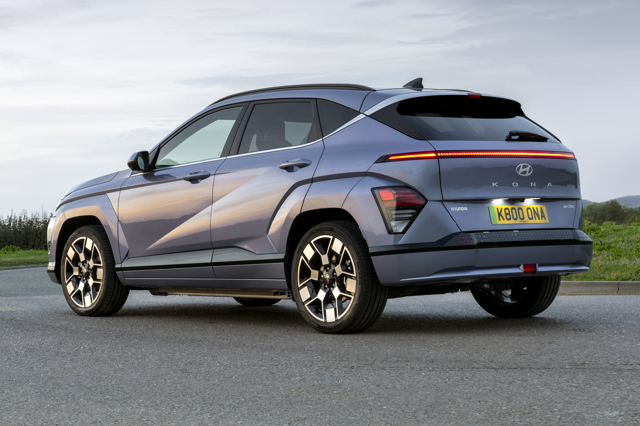
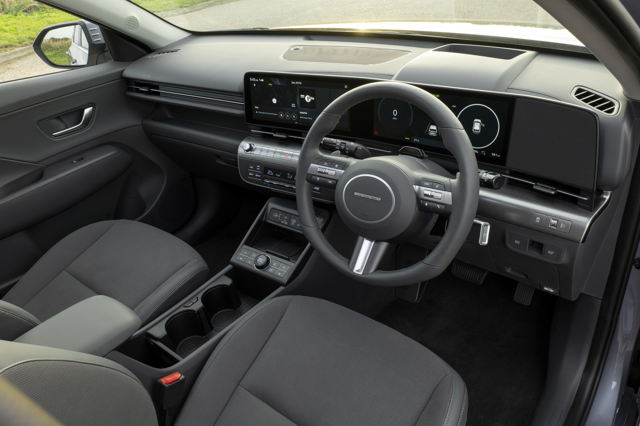
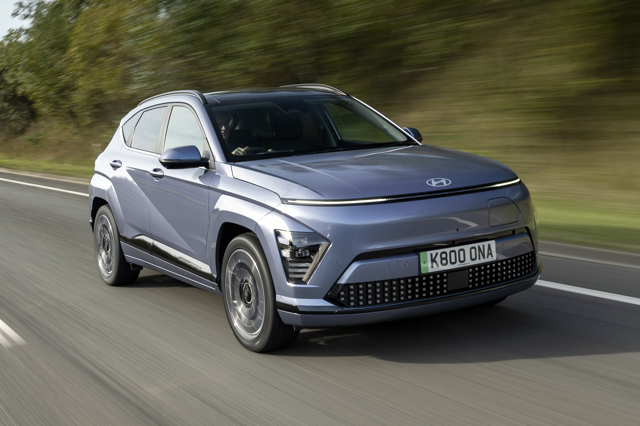
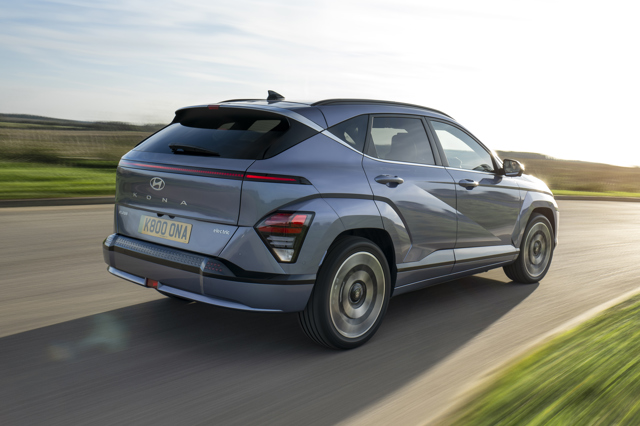
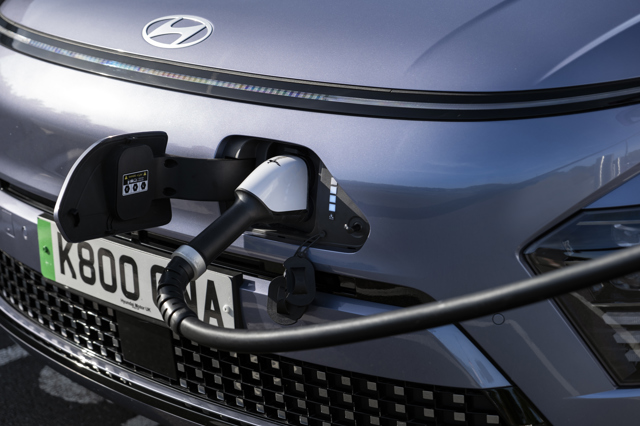
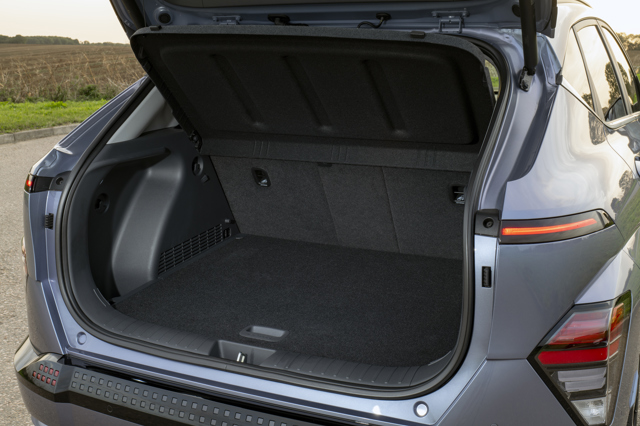


 Good range. Spacious interior. Easy to use technology.
Good range. Spacious interior. Easy to use technology.
 Short on driving fun. Noise at low speeds. Some quality shortcuts inside.
Short on driving fun. Noise at low speeds. Some quality shortcuts inside.


.jpg?width=240&height=160&rmode=crop)
